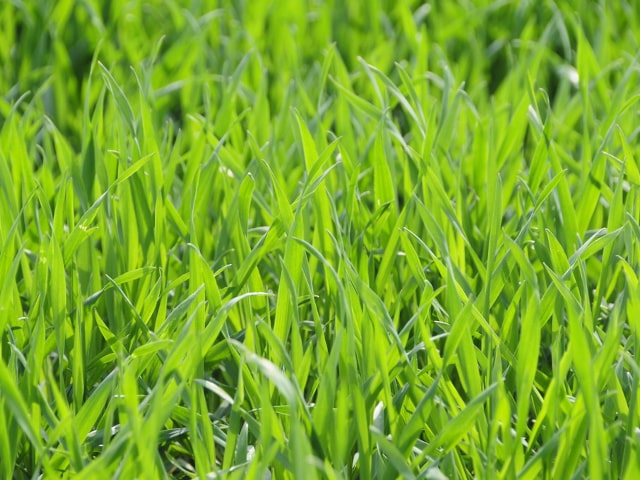
St. Augustine grass (Stenotaphrum secundatum) is a popular warm season grass many people choose to grow in their garden. This is a fast growing grass so it makes for a perfect lawn.
One good thing about this grass is that it can grow in a wide variety of soils and pH levels. It's relatively hardy and it is available in several cultivars. In fact, this is probably the most popular turf grass, and definitely the most common one in Florida. St. Augustine grass is widely used in south-eastern United States. It can also be found outside the US.
If you give it proper care, St. Augustine grass will reward you with lush, dense carpet of green grass on your lawn. The healthy St. Augustine grass has a characteristic medium to dark green/blue color. It thrives in well-drained, rich soil. It's best to be grown in a warm, humid climate but it can survive even less adequate conditions. However, you should limit the exposure to cold temperatures because prolonged exposure can damage this type of grass.
Main Advantages and Disadvantages of St. Augustine Grass
St. Augustine grass offers numerous advantages so you should definitely consider it for your lawn. This type of grass:
- Produces lush, dense turf of dark green and blue green color. It looks magnificent and it makes for beautiful lawn.
- It can easily adapt to a wide range of soils.
- It has a good salt tolerance, so you don't have to worry much about salt levels in the soil.
- It can be established quickly.
- St. Augustine can make a quick lawn from sod.
- It can easily be started from springs, plugs or sod.
- If you want a more shade-resistant grass, there are special cultivars of St. Augustine grass that can tolerate shade.
On the other hand, there are some downsides to this grass, so it's important to be informed about them, too. Some of the main disadvantages of St. Augustine turf include:
- High water requirements. You need to provide it with lots of water to keep it green and healthy.
- It may require additional irrigation, especially during dry moths.
- It can produce thatch if you put it under heavy irrigation or fertilizer schedules.
- This type of grass doesn't tolerate excessive vehicle traffic or even heavy foot traffic.
- It will go dormant during cold months so certain parts of your lawn will turn tan or brown.
- It has coarse, wide leaves so it won't grow as densely as some other grass types.
- Chinch bugs are common pests and they can cause a serious damage to this type of grass.
- St. Augustine grass is susceptible to leaf spot and brown patch, as well as root rot.
- Weed control can prove to be difficult.
Despite these downsides, St. Augustine is a great grass and will make a beautiful lawn if you give it proper care, so it's not surprising that so many people choose to grow it in their lawns.
Popular Cultivars
There are several popular cultivars of St. Augustine grass you can find on the market. Some of the most common include:
- Standard Cultivars: 'Bitterblue', 'Classic', 'DeltaShade', 'Floralawn', 'Floratam', 'Palmetto' and 'Raleigh'.
- Dwarf Cultivars: 'Captiva', 'Delmar', 'Sapphire' and 'Seville'
Maintenance Calendar: Spring (March through May)
Here's what you need to do in the spring to make your St. Augustine grass thrive.
- Mowing. As the spring comes, your St. Augustine grass will begin to turn green. This is a good time to start mowing the grass. As stated above, the grass may turn brown during winter, which might prompt you to cut all of the "dead" grass before the start of a growing season. It's a bad choice because St. Augustine grass spreads by stolons or stems on top of the ground. If you start mowing too low, it will actually scalp the grass and damage the stolons, which will discourage deep rooting. Therefore, you need to be careful with mowing. Mow often, at 2.5 to 4 inches, but make sure to never remove more than 1/3 of the leaf blade. This way, you will avoid the buildup of grass clippings. Collecting the grass is not required, unless the grass coming out of the mower is leaving clumps in your yard.
- Fertilizing. Fertilizing is important for your lawn, but in order to apply the right type and amount of fertilizer, you need to know what your soil is like. Therefore, it's best to have your lawn soil tested every 2 to 3 years. If the test recommends lime application, do it. When using fertilizer, you should apply 1 pound of nitrogen per 1,000 square feet of the lawn about 3 weeks after the grass begins to green up. Don't apply more than 3 pounds of nitrogen per 1,000 square feet per year because that can damage the grass.
- Watering. In the spring season St. Augustine seldom needs watering because of spring rains. In case the lawn is established you might have to apply irrigation on as-needed basis. Watch for the telling signs, such as leaf blades turning blue-gray in color. Another sign are blades that look curled or wilted, or blades that begin to fold over. In case the grass easily shows foot prints from walking, it's a sure sign it's time to apply some irrigation. However, don't overwater your lawn! It's best to apply about 3/4 to 1 inch of water per week, as needed.
- Weeds. It's important to perform adequate weed control during spring. In case crabgrass is a problem, you should apply preemergence herbicides specially made for St. Augustine grass. Make sure to apply it before March 1, or even earlier, if you live in a warmer area. Remember: if weeds are actively growing, then preemergence herbicides will not be able to control them. If you choose to use postemergence herbicides, you need to be careful. St. Augustine grass tends to be very sensitive to certain herbicides, such as 2,4-D. Never apply postemergence herbicides (such as atrazine) in case the air temperature is over 85 degrees D or in case the turf is under moisture stress. You should apply any postemergence herbicides with utmost caution. Make sure to always follow the instructions on the label carefully. Also, make sure to correctly identify the weed before treating your grass with any form of a pesticide.
- Diseases. Spring (and autumn) time is when you might expect some problems with your grass, such as grown spots. These spots often appear in circular patched called Brown Patch fungus. It usually occurs during humid and warm weather. It's fueled by nitrogen. To control it, you may use special fungicides. However, a better method is to reduce irrigation and nitrogen while improving drainage and air movement throughout the soil.
- Pests. Another thing you should think about is pest control. The most common pest attacking St. Augustine grass is the southern chinch bug. You will recognize these pests by yellow spots or drought-like symptoms in sunny locations. If you notice these signs you may wish to check for chinch bugs. To test for bugs, take a coffee metal can and remove the top and bottom. Push the can into the area you think might be infected. Fill it with water. If chinch bugs are present, they will float in the water. If you have these pests attacking your St. Augustine grass it's best to hire a professional to get rid of them.
- Renovation. Spring months are ideal time for some lawn renovation, if needed. This is when you should re-sod certain areas or plant plugs on 6-12 inch centers, if necessary.
Maintenance Calendar: Summer (June through August)
Your St. Augustine grass requires special care during summer, so here are some handy tips on what you should focus on.
- Mowing. Summer months are when you should mow your lawn regularly, every 5 to 7 days, unless the grass is stressed due to drought. In case of drought, you should mow less often.
- Fertilizing. During the summer, the grass grows a lot. This is when you should apply about 1/2 to 1 lb of nitrogen per 1,000 square feet of lawn. However, since the growth is so rapid and intense during this time of year, it's best to split this application in half. Apply the first part around mid-June and the second one early in August for the best effect. Remember to never apply more than 3 lbs of nitrogen per 1,000 square feet per year because it can damage the grass.
- Watering. Your lawn needs to be watered regularly during summer. It's best to do it early in the morning. However, keep in mind that St. Augustine grass can survive for long periods without irrigation. Despite this, good moisture in the soil will make the lawn thrive and retain that beautiful color during the summer months. It's best to provide your lawn with weekly watering of 1 to 1 1/4 inches, which will allow the water to penetrate 4 to 6 inches into the soil, providing enough moisture. In case your lawn is on the sandy soil you will need to apply more frequent watering. In case the lawn is on the clay soil, keep in mind that this type of soil will accept the water slowly. You should wait until the runoff starts before you water the next zone. Then go back to water the zone again, until the water has a chance to penetrate the clay soil to the desired depth. In case the grass looks to dark, wilted, curled or with folded leaf blades, and if footprints show easily, it's a clear sign that your St. Augustine grass needs some watering.
- Cultivation. Consider lawn aeration for areas that are exposed to heavy traffic (be it foot or machine). Also, check for thatch. If it exceeds 0.75 inches, it's best to remove it with a power rake. Early summer is the best time of the year to aerate your lawn so your grass will have enough time to recover before the cold months.
- Insects. Insect control is the same as in the spring and should be applied if the problem occurs.
- Weeds. Weed control can be done with postemergence herbicides. However, make sure to always follow the labels and directions for application and that the herbicide you wish to use is approved for use on St. Augustine grass. Don't apply any herbicide if weeds are not actively growing or if lawn is under stress.
- Disease control: same as the one applied in the spring.
- Renovation: same as the one applied in the spring (if needed).
Maintenance Calendar: Autumn (September through November)
Here's how you should care for your St. Augustine grass in the autumn:
- Mowing. Continue mowing your grass following the same schedule used in the summer.
- Fertilizing. You can fertilize St. Augustine grass between 2 and 6 times per year, so some fertilizing can be done in the autumn.
- Watering. Follow the guidelines for spring (March-May). In case the grass becomes dormant, periodic irrigation may still be needed during dry, windy weather conditions.
- Disease, Weed and Pest Control: same as described above (in the spring and summer sections).
Maintenance Calendar: Winter (December through February)
Here are maintenance guidelines for winter:
- Mowing. Mowing will probably not be required during winter months. However, you can still do some clean up on the lawn. Make sure to pick up any debris that may occur, such as rocks, leaves, sticks, etc.
- Fertilizing. Fertilizer is typically not required during winter. This is a good time to test your soil so you can be prepared for the spring and to learn what kind of fertilizer your soil requires.
- Watering. All newly planted lawns or sods have to be watered to prevent desiccation. However, don't keep the soil wet because dollarweed and sedges may develop in these conditions.
- Disease, Weed and Pest Control: Same as described in the previous sections.
Photo credit: Kamil Porembinski
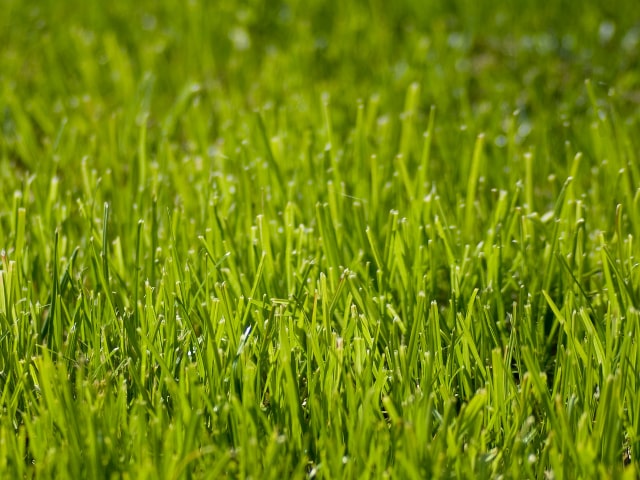
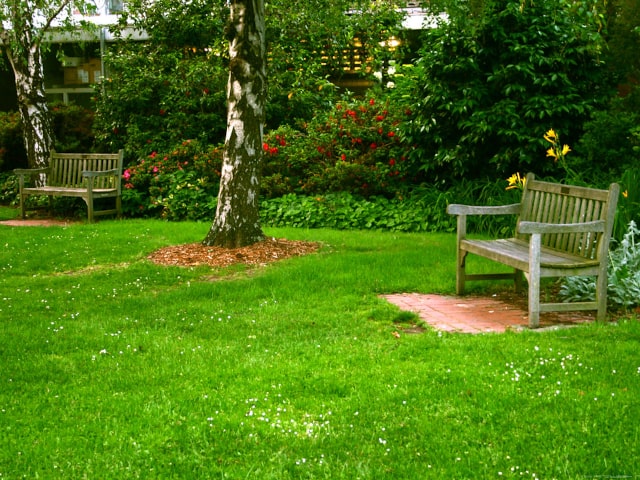
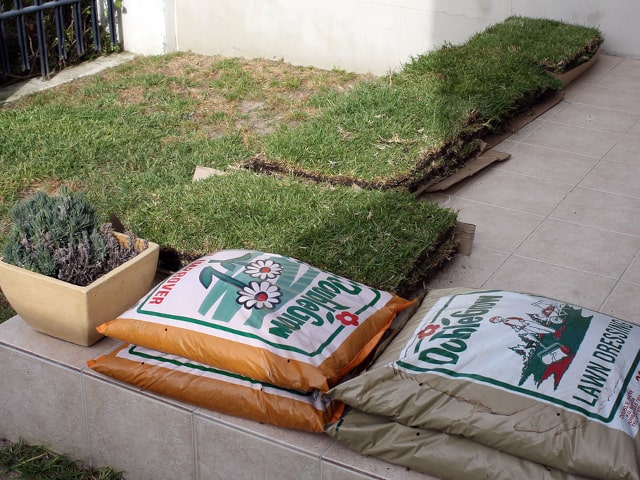
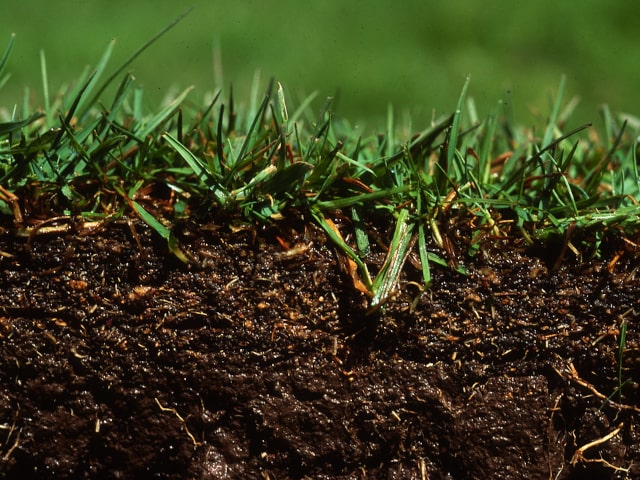
0 Comments